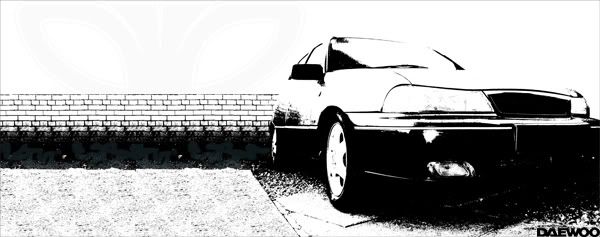Let me preface my reply by stating I am a Dynojet Dynamometer owner and have been testing cars since 1998.ant0ny wrote:Au torque rating are same as US just upside downpontiacjeff wrote:
I'd like to kow the conversion factor for AU torque ratings! 450lbs.ft. of torque in the US is only seen in large displacement V-8's!!!!!!!
Sorry to burst your bubble...
Bottom end was built buy a guy who normally builds drag motors... I just asked for good torque as it being a front wheel drive supposed to be for rallying on dirt.
This day we just installed the LINK Computer and we found the clutch was slipping. Latter we have ran it upto 110Hp with a clutch replacement and now it would be closer to 120+Hp on race fuel and a few more tweaks running on the track with the laptop fine tuning it.
Ant
The mathematical formula for figuring HP from TQ is:
TQ*RPM/5250=HP
Assuming a peak torque rpm of approximately 4000, your 450lbs.ft at the wheels would be equivalent to 304whp at peak torque. Assuming your peak hp rpm is roughly 6500, the measured TQ just under 400lbs.ft. at that point would be equivalent to 482whp. Sorry to burst your bubble, but I know why the numbers are erroneous.
When dyno testing an engine with a waste-spark ignition system (coil packs where one coil drives two cylinders) it is very easy to mis-interpret the rpm signal. if they took the rpm signal off a spark plug using an inductive lead, the computer will be reading a spark every 90 crank degrees instead of 180deg. typical for a 4cyl. So the actual rpm will be misinterpreted to be HALF it's actual speed. This is why the measured tq is so high. A chassis dyno measures weight vs. speed vs. time. The amount of time it takes to accelerate the dyno drums to a given speed = measured HP. From that, TQ is calculated by the dyno computer using HP and RPM by recalculating the formula above to answer TQ: HP*5250/RPM=TQ.
If the measured RPM is not correct, as appears to be the case in your test, the TQ calculation will be incorrect. This is also why your printout has HP and TQ referenced by speed instead of rpm. The computer was unable to graph the test run due to fact that the numbers don't "add up". Due to mathematical constants, HP and TQ must be equal at 5250rpm. This is why your numbers defy logic and the computer could not graph it.
I am surprised the dyno testers didn't catch this error, unless they intended you to believe them capable of building a 450lb.ft. 2.0L engine. My turbocharged C20GET which uses the Daewoo head makes 245whp on 1Bar boost and the highest TQ I was able to measure (due to the automatic trans) was roughly 250lbs.ft. at 4600rpm. I know it makes more, but the trans will downshift if I try to pull it any lower. It probably makes 275-300lbs.ft. at 3500rpm.
I hope I didn't make you angry. Instead my intention is to inform you of the grievous error made on the part of the dyno operator in allowing you to believe these numbers. Not much you can do but to tell them you know they lied about it. IN orderto run a waste-spark 4cyl, they needed to have set the rpm scale for 8cyl.
Here is a dyno run for my turbo "Woo". Notice it is in perfect graph format (hp/tq/rpm) and hp and TQ cross at exactly 5250rpm.


